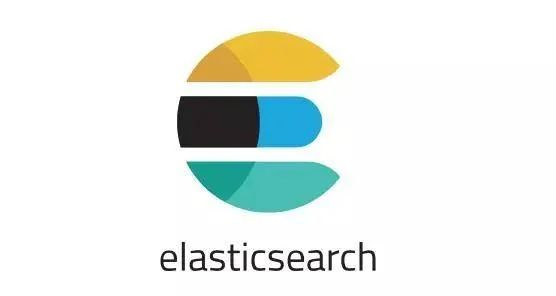
安装
1.在 composer.json 文件中引入 elasticsearch-php:
{ "require": { "elasticsearch/elasticsearch": "~6.0" }}2.用 composer 安装客户端:
curl -s http://getcomposer.org/installer | phpphp composer.phar install --no-dev3.在项目中引入自动加载文件(如果还没引入),并且实例化一个客户端:
require 'vendor/autoload.php';use Elasticsearch\ClientBuilder;$client = ClientBuilder::create()->build();索引一个文档
在 elasticsearch-php 中,几乎一切操作都是用关联数组来配置。REST 路径(endpoint)、文档和可选参数都是用关联数组来配置。
为了索引一个文档,我们要指定4部分信息:index,type,id 和一个 body。构建一个键值对的关联数组就可以完成上面的内容。body 的键值对格式与文档的数据保持一致性。(译者注:如 ["testField" ⇒ "abc"] 在文档中则为 {"testField" : "abc"}):
$params = [ 'index' => 'my_index', 'type' => 'my_type', 'id' => 'my_id', 'body' => ['testField' => 'abc']];$response = $client->index($params);print_r($response);收到的响应数据表明,你指定的索引中已经创建好了文档。响应数据是一个关联数组,里面的内容是 Elasticsearch 返回的decoded JSON 数据:
Array( [_index] => my_index [_type] => my_type [_id] => my_id [_version] => 1 [result] => created [_shards] => Array ( [total] => 2 [successful] => 1 [failed] => 0 ) [_seq_no] => 0 [_primary_term] => 1)获取一个文档
现在获取刚才索引的文档:
$params = [ 'index' => 'my_index', 'type' => 'my_type', 'id' => 'my_id'];$response = $client->get($params);print_r($response);响应数据包含一些元数据(如 index,type 等)和 _source 属性, 这是你发送给 Elasticsearch 的原始文档数据。
Array( [_index] => my_index [_type] => my_type [_id] => my_id [_version] => 1 [found] => 1 [_source] => Array ( [testField] => abc ))搜索一个文档
搜索是 elasticsearch 的一大特色,所以我们试一下执行一个搜索。我们准备用 Match 查询来作为示范:
$params = [ 'index' => 'my_index', 'type' => 'my_type', 'body' => [ 'query' => [ 'match' => [ 'testField' => 'abc' ] ] ]];$response = $client->search($params);print_r($response);这个响应数据与前面例子的响应数据有所不同。这里有一些元数据(如 took, timed_out 等)和一个 hits 的数组,这代表了你的搜索结果。而 hits 内部也有一个 hits 数组,内部的 hits 包含特定的搜索结果:
Array( [took] => 16 [timed_out] => [_shards] => Array ( [total] => 5 [successful] => 5 [skipped] => 0 [failed] => 0 ) [hits] => Array ( [total] => 1 [max_score] => 0.2876821 [hits] => Array ( [0] => Array ( [_index] => my_index [_type] => my_type [_id] => my_id [_score] => 0.2876821 [_source] => Array ( [testField] => abc ) ) ) ))删除一个文档
好了,现在我们看一下如何把之前添加的文档删除掉:
$params = [ 'index' => 'my_index', 'type' => 'my_type', 'id' => 'my_id']; $response = $client->delete($params);print_r($response);你会注意到删除文档的语法与获取文档的语法是一样的。唯一不同的是 delete 方法替代了 get 方法。下面响应数据代表文档已被删除:
Array( [_index] => my_index [_type] => my_type [_id] => my_id [_version] => 2 [result] => deleted [_shards] => Array ( [total] => 2 [successful] => 1 [failed] => 0 ) [_seq_no] => 1 [_primary_term] => 1)删除一个索引
由于 elasticsearch 的动态特性,我们创建的第一个文档会自动创建一个索引,同时也会把 settings 里面的参数设定为默认参数。由于我们在后面要指定特定的 settings,所以现在要删除掉这个索引:
$deleteParams = [ 'index' => 'my_index' ];$response = $client->indices()->delete($deleteParams);print_r($response);响应数据是:
Array ( [acknowledged] => 1 )创建一个索引
由于数据已被清空,我们可以重新开始了,现在要添加一个索引,同时要进行自定义settings:
$params = [ 'index' => 'my_index', 'body' => [ 'settings' => [ 'number_of_shards' => 2, 'number_of_replicas' => 0 ] ]]; $response = $client->indices()->create($params);print_r($response);Elasticsearch会创建一个索引,并配置你指定的参数值,然后返回一个消息确认:
Array( [acknowledged] => 1 [shards_acknowledged] => 1 [index] => my_index)本节结语
这里只是概述了一下客户端以及它的语法。如果你很熟悉 elasticsearch,你会注意到这些方法的命名跟 REST 路径(endpoint)是一样的。
你也注意到了客户端的参数配置从某种程度上讲也是方便你的IDE易于搜索。$client 对象下的所有核心方法(索引,搜索,获取等)都是可用的。索引管理和集群管理分别在 $client->indices() 和 $client->cluster() 中。
来源:https://www.cnblogs.com/mzhaox/p/11·END·
PHP开源社区进阶·提升·涨薪



 branch(分支) tag(标记) 用法详解和详细操作步骤)






清除浮动问题)




)



